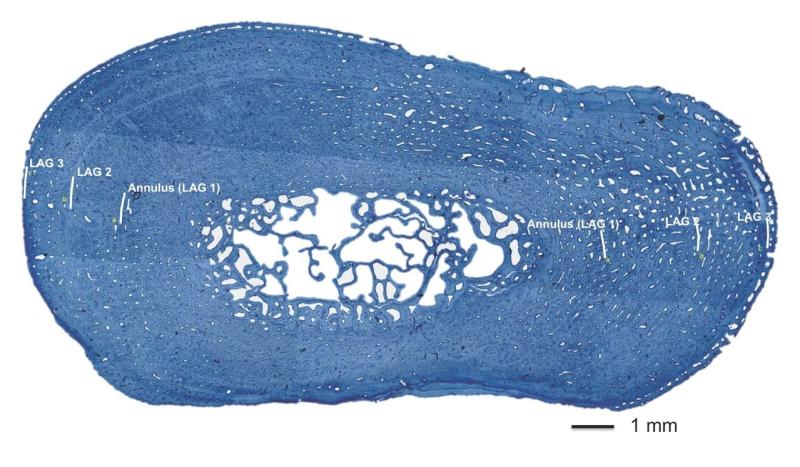Conservation Issue
All six species of sea turtles found in U.S. waters are listed as endangered or threatened under the Endangered Species Act. Depending on the location and the species specific threats can vary, but all sea turtles are facing loss and degradation to their traditional habitats, entanglement in fishing gear, disease, and marine debris—all in a changing ocean. Some, like the leatherback sea turtle, have existed in their current form since the age of the dinosaurs. Others, like the green sea turtle, have been declining in numbers worldwide for years.
As an integral part of our marine ecosystems, NOAA Fisheries is committed to conserving and protecting sea turtles, and our scientists and partners use a variety of innovative techniques to study and protect this species. A new technique developed by three NOAA Fisheries scientists is giving us more insight on sea turtle populations than ever before, extracting life history and other information from sea turtle bones. The technology combines bone dating, or “skeletochronology,” and the sequential sampling of annual growth rings for chemical signatures like stable carbon and nitrogen isotope ratios.
Meet the scientists behind this new technology and learn how it is helping guide the way we protect and conserve sea turtles.
Meet the Experts

Dr. Jeff Seminoff is a marine ecologist and leader of the Marine Turtle Ecology and Assessment Program at NOAA’s Southwest Fisheries Science Center. Dr. Seminoff’s current research uses innovative approaches such as skeletochronology, stable isotope analyses, biotelemetry, animal-borne imagery, and aerial surveys to learn more about the life history of marine turtles throughout the Pacific Ocean.
Check out this Q&A with Dr. Seminoff and learn more about sea turtle skeletochronology

Dr. Larisa Avens has been a research fishery biologist with the Southeast Fisheries Science Center since 1998. She started her career with the sea turtle program at the Beaufort Lab, working with turtles in the water and doing behavioral research before shifting gears to focus on laboratory analysis. She has been the lead for skeletochronology research at the Beaufort Lab since 2003.
Learn more about Dr. Avens and her role in developing new sea turtle research methods

Cali Turner Tomaszewicz has worked with the Southwest Fisheries Science Center Marine Turtle Ecology and Assessment Program since 2008. Her current research uses humerus bones of dead, stranded sea turtles and applies stable isotope analysis with skeletochronology to focus on their life history, habitat use, and growth patterns. Her most recent published work focuses on East Pacific green sea turtles and North Pacific loggerhead turtles.



